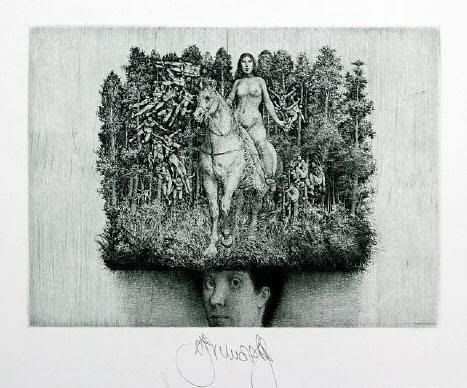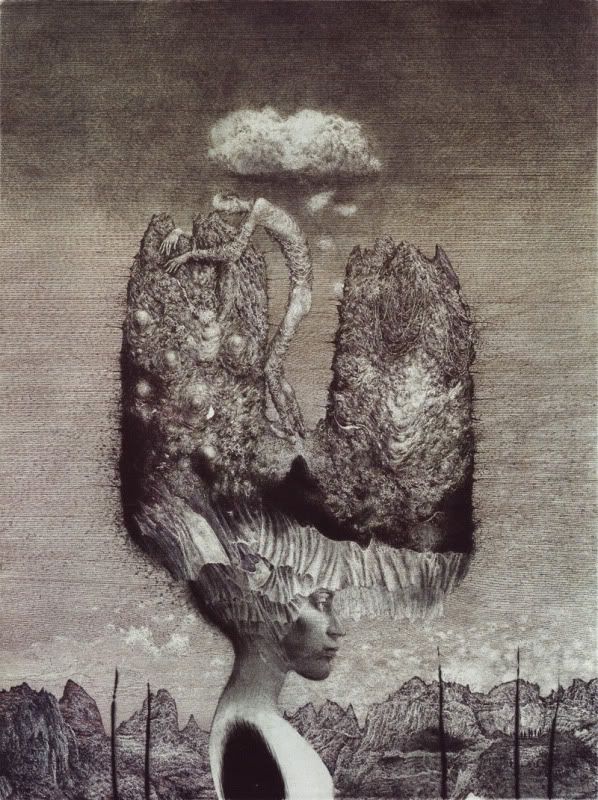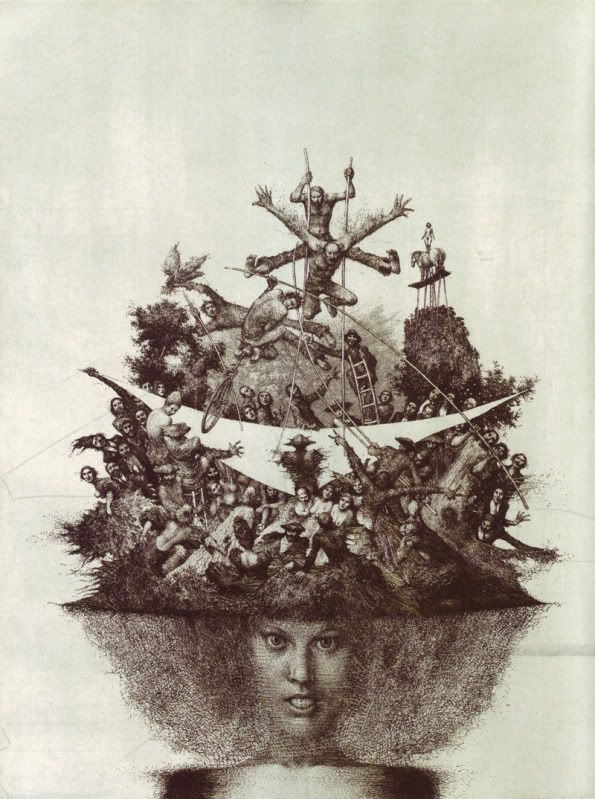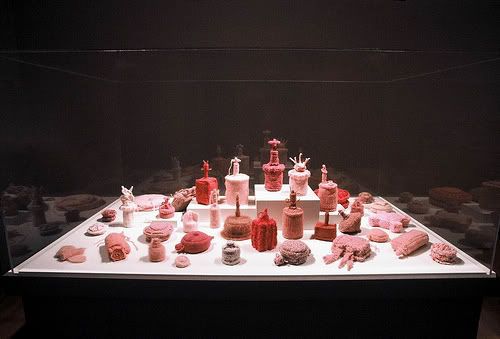Jenny Pope's
website J Pop Studios is a full zoo of exotic (and not so exotic) animal specimens in (colour reduction) woodblock print form. She tackles several topics in contemporary science, from flukes of evolotionary biology, to climate change, ocean acidification, pollution, extinction of the megafauna of Australia, invasive species as well as kitties & poodles.
She has a series investigating the effect of islands on evolution: 'Isolation Produces Oddballs' including the wonderously named,
If Pygmy Elephants Climbed Trees (image size 13” x 17”)
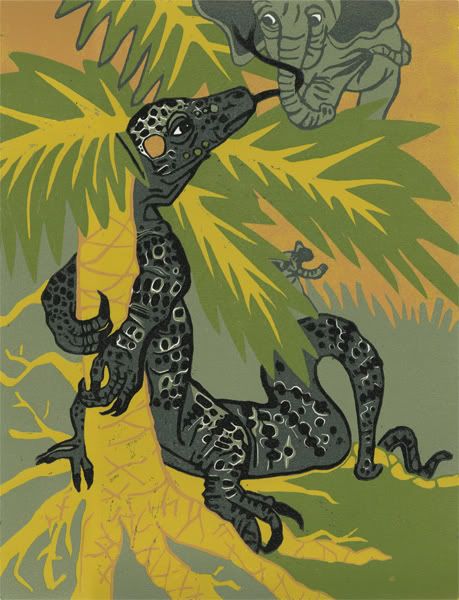
which answers the question how did the 200 pound monitor lizard, the Komodo Dragon get so large? Apparently they were discovered on Flores, along with pygmy elephant bones - and sadly for them, the pachyderms are not known for tree climbing ability. She tackles 'Global Warming Band-aids' in her print 'Ocean Sequestration' (image size 19” x 23.75”) about the perils of simply trying to sequester CO
2 in the deep ocean, and the consequent ocean acidification.

Colleagues of mine are working on the more sophisticated (but as of yet unproven on a large scale) possibility of sequestering CO
2 in icelike 'clathrate' cage of hydrogen-bonded water molecules, known as CO
2 hydrate - below the seafloor, rather than in the deep sea. So, this print reasonates with me as both a marine scientist and a printmaker.
Her
South of North---The Lapping Territories of Bears (image size 32” x 24”) is about the strange fate of bears in far north, where the changing climate has lead to the discovery of the hybrid 'pizzly' (polar bear/grizzly cross).
 Plane and a crane
Plane and a crane (image size 15” x 11.5”) in her 'Endangered Animals' series not only highlights the whooping crane, but also "
Operation Migration," which uses ultralight planes to teach and re-introduce the migration which was lost when a certain population was destroyed, by having the birds imprint on the plane.

The invasive starlings are a problem where I live, as in many places in North America. They were introduced by Eugene Schieffelin who wanted to release all of the birds mentioned in William Shakespere’s plays. Sometimes romantic ideas and biodiversity are a bad mix.
A Starling Guide to Night (image size 19” x 23.75”) is part of her 'Invasive Species' series.

Do yourself a favour and check out
her large portfolio. I love the dynamic style and colour pallette of her prints, which combine the whimsy of children's illustration with serious, well-articulated subject matter. Her fascination with ecology, biology and obvious enthusiasm for science in general is infectious. I do love the medium of woodblock prints, and prints created at the art-science interface are likely to delight me, but I'm also very impressed with the background and information she provides with each print. You could learn a lot simply by reading about her subject matter. Despite her dismay at the way we treat our environment, she has a sense of the ridiculous - highlighting the absurdity of using of rubber ducks, turtles, frogs and beavers spilled from a container ship in 1992 to trace currents - or their imagined interaction with real marine animals, or some of our misconceptions about birds, from recent history. This makes her portfolio wonderful to explore, though the topics remain may be dire.
You should also check out her
blog and her
jpopstudios etsy shop - which also includes etchings.
